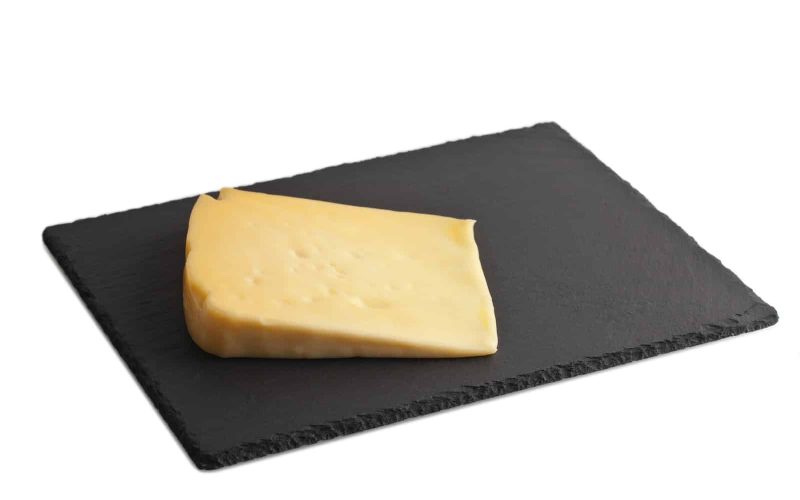Cheese, a highly versatile and much-loved food, finds its place in various cuisines worldwide.
From a gooey, melted slice on a pizza to a creamy spread on crackers, cheese can be enjoyed in countless ways.
But when you’re counting calories, you might find yourself wondering: how many calories in a slice of cheese?
The Role of Cheese in Our Diets
In moderation, cheese can be a great addition to your diet. It’s packed with essential nutrients, including calcium, protein, and vitamin B12, which play a crucial role in maintaining your health.
On the other hand, cheese can also be high in saturated fats and sodium, which are best consumed in moderation.
That’s where understanding the caloric and nutritional content of cheese becomes important, especially if you’re watching your weight or managing specific health conditions.
Understanding Calories
Put calories are the measure of energy your body gets from consuming food and beverages.
They fuel your body’s basic functions and physical activities.
Knowing the caloric content of the foods you consume could help manage your energy balance and maintain a healthy weight.
When it comes to cheese, the caloric content can vary greatly depending on the type of cheese, serving size, and preparation method.
Therefore, understanding the calorie count in cheese can help you incorporate it into your meals in a way that aligns with your dietary goals.
In the next sections, we’ll dive into the caloric content of different types of cheese and explore how you can enjoy cheese while maintaining a calorie-conscious diet.
If you’re new to calorie counting, you might find our article on what is calorie counting useful for getting started.
The Caloric Content of Cheese
When it comes to cheese, the deliciously creamy texture and rich flavor may make you wonder about its caloric content.
Let’s delve into the factors that influence the calorie count in cheese and the range of calories in different types of cheeses.
Factors Influencing the Calorie Count
The calorie count in a slice of cheese can vary widely based on several factors.
The type of milk used to make the cheese plays a significant role in determining its caloric content.
For instance, cheese made from whole milk will have a higher calorie count than cheese made from skim milk due to the higher fat content.
The method of cheese preparation also impacts its calorie count.
Certain types of cheese undergo processes like aging or smoking, which can alter their nutritional profile, including the calorie content.
Lastly, the serving size is crucial when calculating the calorie count. A small slice of cheese will naturally have fewer calories than a larger portion.
So, when you’re thinking about how many calories in a slice of cheese, always consider the size of the slice.
The Range of Calories in Different Cheeses
Now, let’s take a look at the caloric content of various types of cheeses.
| Type of Cheese | Calories per Slice (1oz) |
|---|---|
| Cheddar | 115 |
| Swiss | 106 |
| Mozzarella | 85 |
| Feta | 75 |
| Blue Cheese | 100 |
| Brie | 95 |
As you can see, the calorie count varies quite a bit depending on the type of cheese.
Cheddar cheese, for instance, is typically higher in calories than mozzarella or feta cheese.
This information can be useful when you’re watching your calorie intake.
However, remember that cheese also provides beneficial nutrients like calcium and protein, so it can certainly be part of a balanced diet.
If you’re interested in learning more about calorie counting, check out our article on what is calorie counting.
For a wider range of food calorie counts, take a look at our articles on how many calories in fried chicken, how many calories in pizza, and how many calories in rice.
Counting Calories: A Slice of Cheese
When it comes to monitoring your calorie intake, every bit counts.
The cheese you add to your sandwich, salad, or pasta can significantly impact your daily calorie count.
So, let’s break down the nutrient profile of a slice of cheese and compare the calorie content of different types of cheeses.
Breaking Down the Nutrient Profile
A slice of cheese, in general, is packed with nutrients. It’s a great source of protein, contributing to muscle growth and repair.
It’s also rich in calcium, which is essential for bone health. Besides these, cheese contains vitamins A and B12, zinc, and phosphorus.
But how about calories? The caloric content of cheese primarily comes from its fat content.
Fat is energy-dense, with 9 calories per gram, compared to protein and carbohydrates, which have 4 calories per gram.
Consequently, cheeses with a higher fat content will have a higher calorie count.
Comparing Different Types of Cheese
The calorie content of cheese can vary widely depending on the type of cheese.
Here’s a quick comparison of the calorie content in a typical slice (around 1 ounce or 28 grams) of various popular cheeses:
| Cheese Type | Calories |
|---|---|
| Cheddar | 113 |
| Mozzarella | 85 |
| Swiss | 106 |
| Feta | 75 |
| Blue | 100 |
| Brie | 95 |
Looking to add some feta to your Greek salad? You can find out more about its calorie content in our article on how many calories in feta cheese.
Understanding the calorie content of different cheeses can help you make more informed decisions about your food choices.
If you’re conscious about your calorie intake, it might be worth exploring lower-calorie cheese options or adjusting your portion sizes.
Remember, every slice counts when you’re counting calories!
Factors Affecting Calorie Count in Cheese
When you’re counting calories, it’s essential to understand all the elements that can influence the caloric content of your food.
Cheese is no different. The number of calories in a slice of cheese can vary based on two primary factors: cheese preparation methods and cheese serving sizes.
Cheese Preparation Methods
How a cheese is prepared can significantly impact its calorie count.
For example, regular cheese and low-fat cheese have different caloric content due to the difference in fat content.
Similarly, processed cheese often contains more calories than natural cheese due to additional ingredients like oils and preservatives.
Here’s a comparison table for you to understand better:
| Cheese Type | Calories per Slice |
|---|---|
| Regular Cheese | 100-120 |
| Low-fat Cheese | 50-70 |
| Processed Cheese | 70-90 |
To accurately count your calories, it’s important to consider the type of cheese you’re eating.
For more details on how to count calories, check out our guide on what is calorie counting.
Cheese Serving Sizes
The serving size is another crucial factor that determines how many calories in a slice of cheese.
A thin slice will contain fewer calories than a thick slice, and a small cube will have less than a large wedge.
Here’s a table to help you visualize:
| Serving Type | Calories |
|---|---|
| Thin Slice | 50-60 |
| Thick Slice | 100-120 |
| Small Cube | 40-50 |
| Large Wedge | 100-200 |
Remember, when you’re counting calories, it’s not just about the type of food but also how much you eat.
If you’re a fan of cheese, don’t worry! You don’t have to give it up entirely.
Simply understanding how preparation methods and serving sizes affect the caloric content can help you make more informed decisions and maintain a balanced diet.
For more tips on incorporating cheese into a calorie-conscious diet, stay tuned for the next section.
How to Incorporate Cheese in a Calorie-Conscious Diet
For all the cheese lovers out there who are also counting their calories, you don’t have to give up your favorite food completely.
There are ways to enjoy cheese while maintaining a balanced calorie intake, and this section is all about that.
Tips for Choosing Lower Calorie Cheeses
When picking out cheese, keep in mind that the type of cheese makes a big difference in terms of caloric content.
For instance, a slice of cheddar cheese typically contains more calories than a similar-sized slice of mozzarella.
If you want to know how many calories in a slice of cheese, here’s a quick comparison:
| Cheese | Calories (per 1 oz slice) |
|---|---|
| Cheddar | 113 |
| Mozzarella | 85 |
| Gouda | 101 |
| Feta | 74 |
| Blue Cheese | 99 |
Hard cheeses like Parmesan can be a good choice since you often need less of these strongly flavored cheeses to satisfy your taste buds.
For more detailed information, take a look at our article on how many calories in feta cheese.
Ways to Enjoy Cheese While Maintaining Calorie Balance
- Portion Control: Cheese is nutritious and provides a good source of calcium and protein, but it’s also high in calories and fat. Be mindful of the amount you’re adding to your meals. A little can go a long way in terms of flavor.
- Use Cheese as a Garnish: Instead of making cheese the main ingredient, use it to enhance the flavors of your dishes. Sprinkle some on your salad, or use a small amount in your sandwich.
- Opt for Low-Fat or Reduced-Fat Options: Many types of cheese are available in low-fat or reduced-fat versions. While these options may not taste exactly the same as the full-fat versions, they can be a good alternative when you’re watching your calorie intake.
- Pair with Low-Calorie Foods: Pairing cheese with low-calorie foods like fruits, vegetables, or whole grains can help you create a balanced meal or snack. For example, pair apple slices with a small serving of cheddar or top a whole grain cracker with a slice of mozzarella.
Remember, you don’t have to completely eliminate cheese from your diet if you’re counting calories.
It’s all about making informed choices and finding a balance that works for you.
So go ahead and enjoy your favorite cheese; keep in mind how many calories in a slice of cheese you’re adding to your meals.








